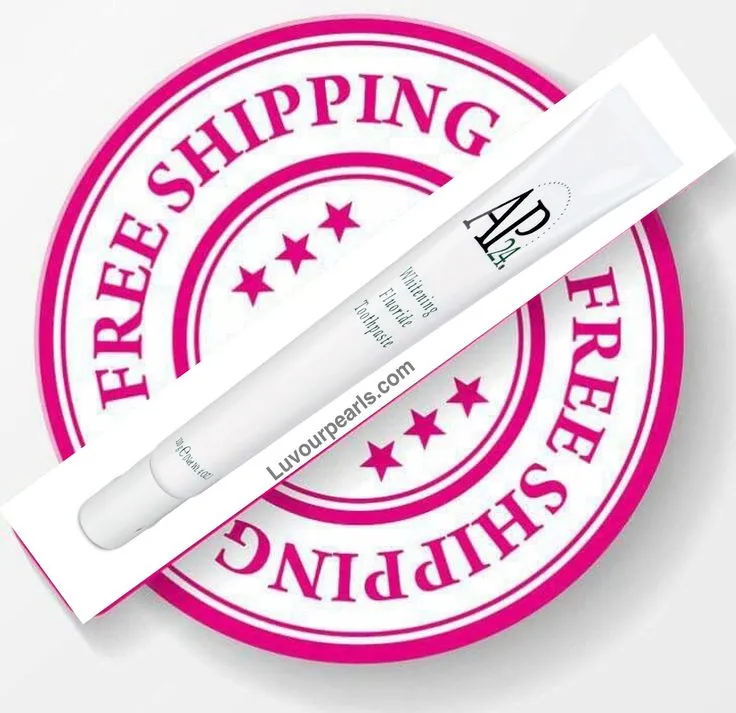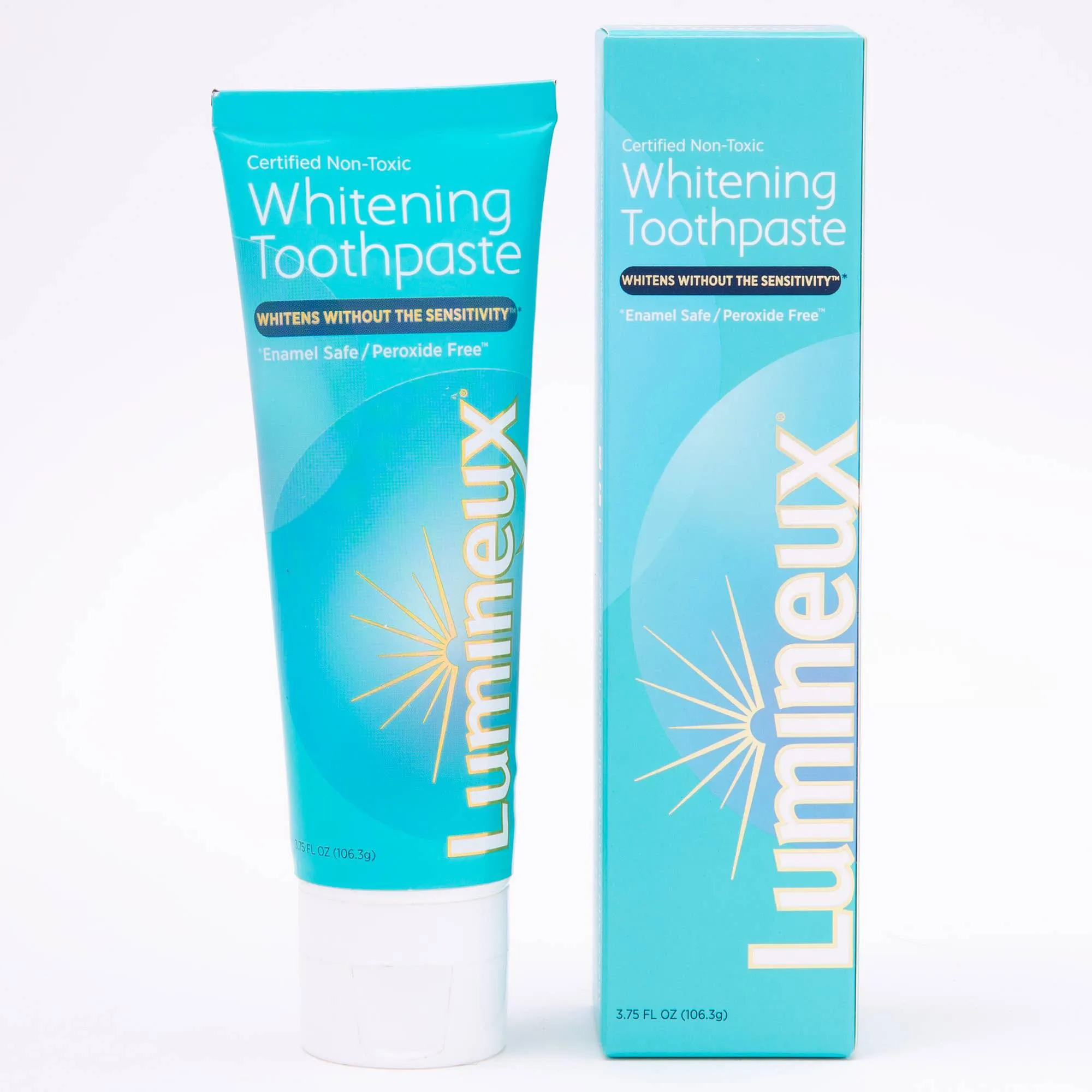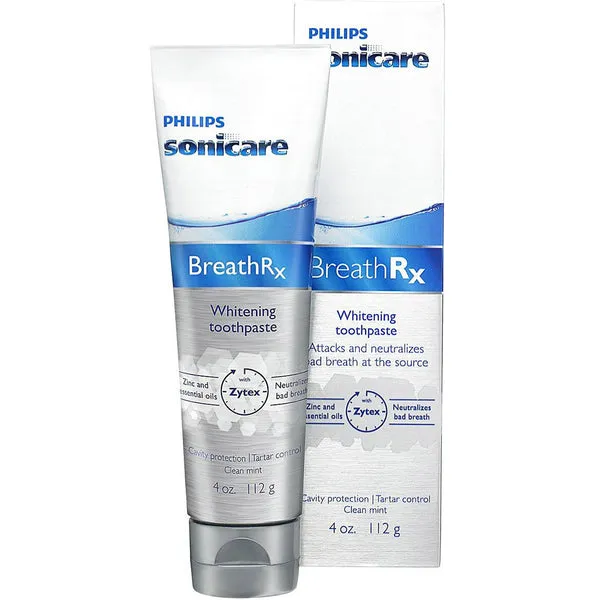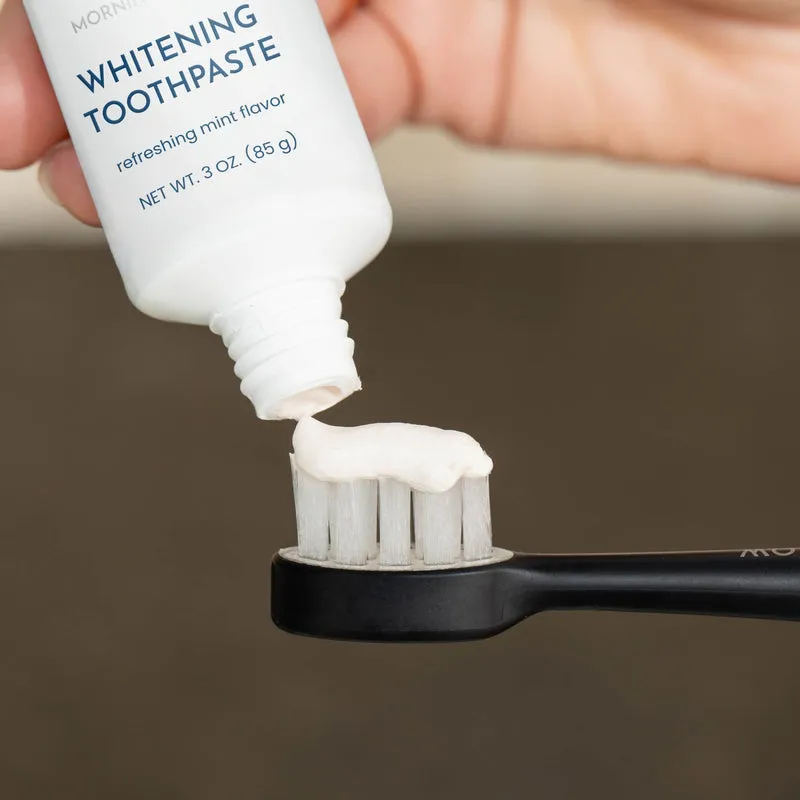What is Whitening Toothpaste
Whitening toothpaste is a type of oral hygiene product designed to help remove surface stains and improve the brightness of your teeth. Unlike teeth whitening treatments performed by a dentist, whitening toothpastes primarily work on the surface of the teeth. They are easily accessible over the counter and provide a convenient way to enhance the appearance of your smile. The effectiveness of whitening toothpaste varies depending on the ingredients and the type of stains present. It’s important to understand how these toothpastes function and their limitations to manage expectations and achieve the best results. Regular use, combined with proper brushing techniques, can contribute to a noticeably brighter smile over time. This guide explores the different aspects of whitening toothpaste, from how they work to how to choose the right one for your needs.
How Whitening Toothpaste Works
Whitening toothpastes work through various mechanisms. The most common way is by using abrasive agents, such as hydrated silica or calcium carbonate, to gently polish the teeth and remove surface stains. These abrasives scrub away stains caused by coffee, tea, wine, and other foods. Some whitening toothpastes also contain chemical agents like hydrogen peroxide or carbamide peroxide, which help to break down stain molecules. These agents penetrate the enamel to lift stains from deeper within the tooth. The degree of whitening varies depending on the concentration of these agents and the duration of use. The effectiveness also depends on the type of stains and the individual’s dental health. It’s crucial to follow the instructions on the product label and consult with a dentist to ensure that the toothpaste is suitable for your teeth and gums.
Types of Whitening Toothpaste

There are various types of whitening toothpaste available in the market, each with its unique formulation and benefits. Some toothpastes are designed for general whitening, while others target specific concerns. Some common types include those with abrasive agents for stain removal, those with peroxide-based whitening agents for deeper whitening, and those with fluoride for strengthening enamel. There are also toothpastes specifically formulated for sensitive teeth, which contain ingredients that reduce sensitivity. The choice of toothpaste depends on individual needs, preferences, and any pre-existing dental conditions. It is essential to read product labels, understand the ingredients, and choose a toothpaste that aligns with your oral health goals. Consider consulting with a dentist for personalized recommendations and advice on the best type of whitening toothpaste for your specific needs.
Whitening Toothpaste for Sensitive Teeth
Individuals with sensitive teeth often find that traditional whitening toothpastes can exacerbate their discomfort. However, there are specially formulated whitening toothpastes designed to address this issue. These toothpastes usually contain lower concentrations of abrasive agents and whitening chemicals. They may also include ingredients like potassium nitrate, which helps to reduce tooth sensitivity by blocking pain signals to the nerves. When choosing a whitening toothpaste for sensitive teeth, it is essential to look for products that are specifically labeled for sensitivity. Start with a small amount and monitor your teeth for any increase in sensitivity. If you experience any discomfort, reduce the frequency of use or consult with your dentist. It’s important to be patient, as these toothpastes may take longer to produce noticeable results compared to those with stronger formulations.
Key Ingredients
Understanding the key ingredients in whitening toothpaste is crucial for making an informed choice. Common ingredients include abrasive agents like hydrated silica, which physically remove stains, and peroxide-based agents such as hydrogen peroxide and carbamide peroxide, which chemically break down stains. Fluoride is also a common ingredient, as it helps to strengthen enamel and prevent cavities. Other ingredients include pyrophosphates, which help to prevent tartar buildup, and various flavoring agents. Always check the ingredient list for potential allergens or sensitivities. If you have sensitive teeth, avoid toothpastes with harsh abrasives or high concentrations of whitening agents. If you have any concerns or questions, consult with your dentist, who can provide personalized recommendations based on your specific needs and oral health condition. Also consider ingredients like stannous fluoride, which fights both cavities and sensitivity.
How to Use Whitening Toothpaste Correctly

To maximize the benefits of whitening toothpaste, it’s essential to use it correctly. Start by applying a pea-sized amount of toothpaste to your toothbrush. Gently brush your teeth for two minutes, ensuring that you reach all surfaces of your teeth, including the front, back, and chewing surfaces. Use a soft-bristled toothbrush to avoid damaging your enamel and gums. After brushing, rinse your mouth thoroughly with water to remove any residual toothpaste. Avoid swallowing the toothpaste, as some ingredients can be harmful if ingested. For best results, use whitening toothpaste twice daily, in the morning and before bed. Be consistent with your brushing routine, and combine it with other oral hygiene practices, such as flossing and regular dental check-ups. Consistent, proper usage will gradually reveal the whitening effects of the toothpaste.
Proper Brushing Techniques
Effective brushing techniques are crucial for maximizing the benefits of whitening toothpaste. Use a soft-bristled toothbrush to avoid damaging your enamel and gums. Hold your toothbrush at a 45-degree angle to your gums and use gentle, circular motions to brush each tooth. Brush the outer surfaces, inner surfaces, and chewing surfaces of all your teeth. Ensure that you reach all areas of your mouth, including the back teeth. Brush for a minimum of two minutes, twice daily. It’s helpful to divide your mouth into four quadrants and spend 30 seconds on each quadrant. Avoid brushing too hard, as this can erode your enamel and cause sensitivity. Replace your toothbrush every three months, or sooner if the bristles become frayed. Proper brushing techniques ensure effective stain removal and overall oral health. Consider using an electric toothbrush with a built-in timer and pressure sensor for enhanced brushing efficiency.
Frequency of Use
The frequency of using whitening toothpaste is another important consideration. Most dentists recommend using whitening toothpaste twice daily, in the morning and before bed, as part of your regular oral hygiene routine. Using the toothpaste more frequently than recommended will not necessarily speed up the whitening process and may even lead to tooth sensitivity or enamel erosion. If you have sensitive teeth, you may want to start with once-a-day use and gradually increase the frequency as tolerated. Pay attention to your teeth and gums, and adjust the frequency if you experience any discomfort. Consistency is key. Stick to a regular brushing schedule for at least a few weeks to see noticeable results. Follow the instructions on the product label and consult with your dentist to determine the best frequency for your specific needs and dental health.
Things to Avoid After Brushing

Certain habits can reduce the effectiveness of whitening toothpaste and even damage your teeth. After brushing, avoid rinsing your mouth vigorously with water, as this can wash away the fluoride and other beneficial ingredients from the toothpaste. Instead, simply spit out the excess toothpaste. Refrain from eating or drinking anything for at least 30 minutes after brushing, to allow the fluoride to work its magic. Avoid consuming highly acidic foods and beverages, such as citrus fruits, sodas, and sports drinks, as these can weaken your enamel, especially after brushing. Refrain from smoking or using tobacco products, as they can stain your teeth and negate the whitening effects. If you are a coffee or tea drinker, limit your intake or consider drinking through a straw to minimize contact with your teeth. Following these guidelines will help to maximize the whitening effects of your toothpaste and maintain your overall oral health.
Common Mistakes to Avoid
Several common mistakes can hinder the effectiveness of whitening toothpaste. One of the most frequent is inconsistent use. To see noticeable results, it’s essential to brush regularly, twice daily. Another mistake is using too much toothpaste; a pea-sized amount is usually sufficient. Over-brushing, which can damage enamel and lead to sensitivity, is also a common pitfall. Another mistake to avoid is expecting unrealistic results. Whitening toothpaste can improve the brightness of your smile but may not achieve the same dramatic results as professional whitening treatments. Ignoring other oral hygiene practices, such as flossing and regular dental check-ups, is another mistake. Whitening toothpaste is most effective when used as part of a comprehensive oral care routine. Avoid using the wrong toothpaste for your needs, such as using a strong whitening toothpaste if you have sensitive teeth. Also, neglecting to read and follow the product instructions can also be a mistake.
Over-Brushing
Over-brushing is a common mistake that can damage your teeth and gums, negating the benefits of whitening toothpaste. Brushing too hard or too frequently can erode your enamel, leading to tooth sensitivity, and gum recession. The ideal brushing time is two minutes, twice daily. Use a soft-bristled toothbrush and apply gentle, circular motions. Avoid scrubbing your teeth vigorously. If you notice any signs of enamel erosion, such as increased sensitivity to hot or cold foods, reduce the frequency or pressure of brushing. Replace your toothbrush every three months or sooner if the bristles become frayed. Be gentle with your gums and teeth. Listen to your dentist’s advice, and follow a proper brushing technique. Over-brushing can damage your teeth and gums and reduce the effectiveness of the whitening toothpaste. Consider using an electric toothbrush with a pressure sensor to monitor your brushing habits.
Using the Wrong Toothpaste

Choosing the wrong type of whitening toothpaste can also lead to less-than-optimal results. If you have sensitive teeth, using a toothpaste with harsh abrasives or high concentrations of whitening agents can cause discomfort and worsen your sensitivity. Similarly, if you have existing dental issues, such as cavities or gum disease, whitening toothpaste may not be the best solution. It is always best to consult with your dentist before starting to use a whitening toothpaste, especially if you have any pre-existing dental conditions. Carefully read product labels and choose a toothpaste that suits your specific needs. For example, if you are looking for stain removal, consider a toothpaste with abrasive agents. If you are more concerned with enamel strengthening, look for a toothpaste with fluoride. Selecting the appropriate toothpaste will increase its effectiveness.
Benefits of Using Whitening Toothpaste
Using whitening toothpaste offers several benefits, extending beyond simply brightening your smile. One of the primary benefits is stain removal. Whitening toothpastes help remove surface stains caused by food, drinks, and tobacco, leading to a visibly whiter and brighter smile. A brighter smile can significantly enhance your overall appearance and boost your self-confidence. Whitening toothpastes often contain fluoride, which helps strengthen enamel and prevent cavities, improving your oral health. The use of whitening toothpaste can encourage a more consistent oral hygiene routine, improving your overall dental health. Regular use of whitening toothpaste can also improve your oral hygiene habits. With a brighter and cleaner smile, you may be more motivated to maintain good oral hygiene and overall health. Whitening toothpaste can be a cost-effective way to enhance your smile.
Improving Your Smile
One of the most significant benefits of using whitening toothpaste is the improvement in your smile. As whitening toothpaste removes surface stains, teeth appear whiter and brighter. This can make a big difference in your overall appearance, creating a more youthful and attractive look. A brighter smile often leads to a better first impression and can boost your confidence in social and professional settings. Regular use of whitening toothpaste, combined with good oral hygiene practices, can help you maintain a consistently bright and healthy smile. Also, a whiter smile can make you feel more self-assured and promote a positive self-image. Maintaining a bright smile can significantly improve your quality of life.
Boosting Confidence

A brighter smile can significantly boost your self-confidence. Having a whiter and more attractive smile can make you feel more self-assured in social situations, at work, and in your personal life. Feeling good about your smile can also lead to a more positive self-image, which can impact various aspects of your life, including your relationships and career. A confident smile encourages you to be more outgoing, sociable, and more inclined to take risks. A brighter, more confident smile can enhance your overall well-being and quality of life, allowing you to make better connections and express yourself more freely. Confidence is a crucial element of a well-rounded life, and a healthy smile contributes significantly to it. This in turn enhances your communication, social interactions, and overall mental health.
Tips for Choosing the Right Whitening Toothpaste
Choosing the right whitening toothpaste requires careful consideration of your individual needs and preferences. One important step is to read reviews from other users. These reviews can provide valuable insights into the effectiveness of the toothpaste, as well as potential drawbacks, such as sensitivity or unpleasant taste. Always check the ingredient list to ensure the toothpaste is suitable for your needs and doesn’t contain any ingredients you are allergic to. If you have sensitive teeth, look for a toothpaste specifically designed for sensitivity, with lower concentrations of abrasive agents and whitening chemicals. It’s also crucial to consult with your dentist for personalized recommendations. Your dentist can assess your oral health, determine the cause of any stains, and advise on the best type of whitening toothpaste for your specific situation. Remember, regular dental check-ups are essential for maintaining optimal oral health, including a bright and healthy smile.
Read Reviews
Before purchasing a whitening toothpaste, it’s highly recommended to read reviews from other users. Online reviews can provide valuable insights into the real-world effectiveness of the product, as well as any potential issues or drawbacks. Look for reviews that discuss the toothpaste’s ability to remove stains, its impact on tooth sensitivity, and the overall user experience. Consider reviews from multiple sources to get a well-rounded understanding. Pay attention to any recurring complaints or common issues, such as an unpleasant taste or a gritty texture. You can gain valuable information about how the toothpaste performed for others with similar dental needs. You will be able to make a more informed decision about whether the product is suitable for you.
Consult a Dentist

The best way to choose the right whitening toothpaste is to consult with your dentist. Your dentist can assess your oral health, including your teeth and gums, and determine the cause of any stains. They can also provide personalized recommendations based on your specific needs, oral health, and any existing dental conditions. Your dentist can also advise you on the appropriate ingredients, such as peroxide-based agents or abrasive agents. If you have sensitive teeth, your dentist can recommend toothpastes that help reduce sensitivity. Regular dental check-ups are essential for maintaining optimal oral health. Consulting with your dentist ensures you choose a safe and effective whitening toothpaste that will contribute to your overall oral hygiene. The advice of a dental professional can ensure your oral health and the success of your whitening efforts.
